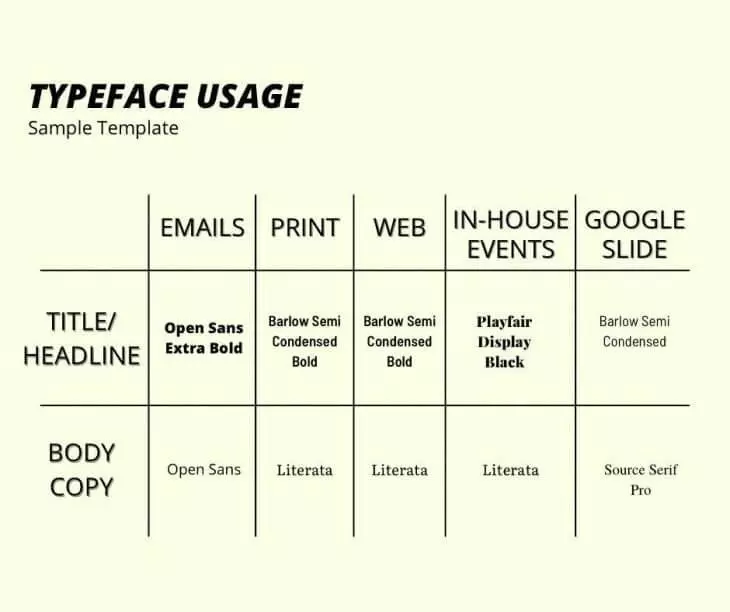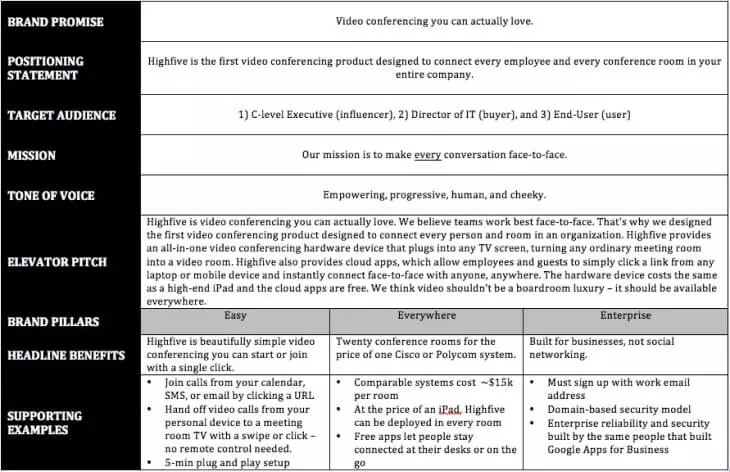Comments
- No comments found

A brand guide is a collection of specifications that helps you to communicate and present a consistent visual brand to the world.

Just test how fast you can recognize a few of the most famous brands. You see the initial ‘for over a blue tile and you call it Facebook. A glance at the swoosh and you know it’s Nike. You listen to a “ta-dum” and you know it’s Netflix.
These companies are virtually glued to your brain, and strong brand guidelines are what makes them stick. Branding Guidelines are necessary for your brand’s quality control, comprehension, identity and recognition.
In this article, we will look at 5 simple steps to create a brand guide.
Let’s dive in.
Your brand story should clearly state your purpose, vision, mission and principles that guide the emotions you want to convey to your customers. You can make your story all about your brand personality, cool, exciting and unapologetically expressive like Nike or you can keep it plain and simple like Facebook. In addition to this, you can also include your brand history, background, milestones and other relevant information (awards and patents). Whichever way you choose to tell your brand’s story, it will be the base for the brand experience and will clue in the rest of the style guide.
Once you’re done with your brand story, you must show what your brand looks like. Here you state your logo (primary, secondary and icons), color palette (primary and secondary colors), typography (Fonts, sizes and spacing) and other imagery (Photos and Illustrations).
Your logo is the one thing you want everyone to recognize in a flash. But before you jump to decide on any logo, colors, fonts, or graphics, it’s better to have a look at what your competitors are doing. Discover a middle ground between stand out among the niche competitors and expected visual language in the industry. You must include your logo variations (primary, secondary and icons). By including a secondary logo, people won’t have to modify your primary logo in situations where it doesn’t fit. Your secondary logo could be minimalistic, a short wordmark, or even something as simple as a single letter.
To keep your brand recognition strong, it’s important to make your core brand colors well known and consistent. The primary palette consists of three to five colors that actually represent your brand. You must have a primary color palette, to start with when communicating your colors in the branding guide. It’s also important to have a secondary color palette that can be used across various channels allowing variety while maintaining your brand identity. These colors can be updated more frequently and often changed according to trends and marketing goals.

Source: Photo by Olya Kobruseva from Pexels
If it’s done well, it goes unnoticed but it may stick out like a sore thumb if it’s done poorly. Like your color palette, your collection of fonts must have three to five different examples. Each should include the name of the font, the weight, and the size. Create a Typeface usage document to specify the fonts, weight, and colors to be used for headers, the body text, and everything in between for different print and web documents and digital platforms.

It’s important to create some guidelines for imagery like photography, illustrations, charts, infographics, etc. to include in your brand style guide. You can create your own custom icons, official illustrations or photography style that tells your story. If you want to use photographs frequently, specify compositions, color schemes, styles, and technical specifications in your brand guide.
You can also add other recognitional elements like audios, physical shapes, like the typical shape of the coco-cola bottle or the Volkswagen Beetle.

Source: Unsplash
Movement can also be a brand element, or how the product shifts, expands or scales down. E.g. whenever you play a Netflix or HBO original, the way their logos appear and interact with the screen before the actual series starts.
Every brand has a voice of its own. Create a compatible tone and message that is easily identifiable and in tune with your brand. State your brand’s essence, value proposition, taglines and messaging standards. Outline your writing style in a few paragraphs or simply state the words and phrases that you would like and not like to use. Add a few examples for social creatives, customer queries, press releases, marketing emails and promotional content.

Source : Pardot
Try to convey in the same way internally and externally to reinforce the visual identity. For e.g. Use your logo icon and color accents instead of plain black numbers for in-house documents like - plans, reports, letters, invitations, etc. To showcase the vibe of your brand, use your brand colors and fonts for headings and descriptions in internal and external documents. If you implement the guidelines internally, your team will develop a personal connection with the brand and get a better understanding of how to present the brand.
Once you’re done with all of the above, determine how you will make your brand guide easily sharable in-house and externally. It is important to make your brand guide easily accessible, specially to your external collaborators. You can create a virtual space or a system where you and your team can swiftly share the guidelines. You can use cloud storage, a shared drive or create a separate landing page. You can use DeskAlerts, a multi-channel alerting software with 50+ communicating features to easily communicate with your in-house team.
A brand guide should be a dynamic document. Make sure you update it according to the marketing trends and your goals. Remember, every little detail counts, from the primary color of your brand to the fonts you use. Your brand guide helps to establish the branding rules and makes sure that everyone on your team is on the same page. This way, you have better control over your brand image. Without brand guidelines, your brand identity may easily become muddled. With guidelines in place, you can ensure that your brand is displayed to the world, the way you wish.
Anuja is the Co-founder and CEO of RedAlkemi Online Pvt. Ltd., a digital marketing agency helping clients with their end to end online presence. Anuja has 30 years of work experience as a successful entrepreneur and has co-founded several ventures since 1986. She and her team are passionate about helping SMEs achieve measurable online success for their business. Anuja holds a Bachelors degree in Advertising from the Government College of Fine Arts, Chandigarh, India.
Leave your comments
Post comment as a guest